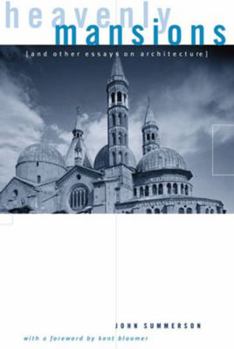Heavenly Mansions: And Other Essays on Architecture
Select Format
Select Condition 
Book Overview
A classic of architectural history and theory, Heavenly Mansions interprets architecture as a reflection of the age in which it flowers, and traces the alternating themes of fantasy and functionalism as exemplified in various styles and in the works of a number of influential men, including Wren, Viollet-le-Duc, William Butterfield, and Le Corbusier. Succinctly summarizing 800 years of viewpoints about architecture, it ranges from Gothic architecture to the Renaissance to the influence of modern abstract art on twentieth-century architecture.
"Each essay is a voyage of discovery. What is so interesting and what makes Mr. Summerson the architectural critic of his generation . . . is [an] aversion to dogma. . . . It is supremely well worth reading."--Spectator
"Each essay is a voyage of discovery. What is so interesting and what makes Mr. Summerson the architectural critic of his generation . . . is [an] aversion to dogma. . . . It is supremely well worth reading."--Spectator
Format:Paperback
Language:English
ISBN:0393318575
ISBN13:9780393318579
Release Date:October 1998
Publisher:W. W. Norton & Company
Length:304 Pages
Weight:0.68 lbs.
Dimensions:0.6" x 5.4" x 8.0"
Customer Reviews
1 rating
Summerson: Heavenly.
Published by Thriftbooks.com User , 19 years ago
Certain architectural writers are a pleasure to read. John Summerson is one of them, approaching "la creme de la creme." Few can match him in terms of erudition, clarity of expressed thought, and sheer elegance of language. I think all students - after their first basic history courses - ought to read the following chapters: "Heavenly Mansions: an Interpretation of Gothic" "Viollet-le-Duc and the Rational Point of View" "Architecture, Painting, and Le Corbusier" "The Mischevious Analogy" The other chapters are also all good, but the above will probably be the most interesting to those concerned with the development of modern architectural theory, giving an interested mind as much to think about as Complexity and Contradiction or Learning from Las Vegas (perhaps more than both combined).





